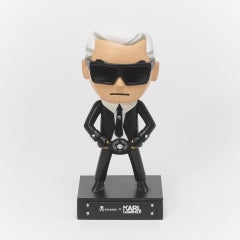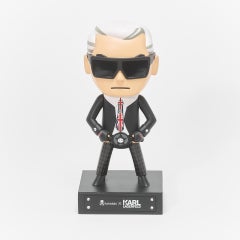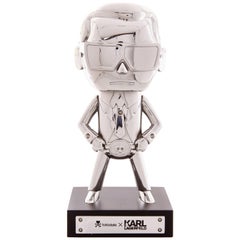Tokidoki X Karl Lagerfeld
21st Century and Contemporary Pop Art Figurative Sculptures
ABS
21st Century and Contemporary Pop Art Figurative Sculptures
ABS
Recent Sales
21st Century and Contemporary Pop Art Figurative Sculptures
ABS
21st Century and Contemporary Decorative Objects
21st Century and Contemporary Italian Art Deco Wrist Watches
People Also Browsed
1990s Art Deco Figurative Drawings and Watercolors
Color Pencil, Ballpoint Pen
20th Century French Art Deco Table Lamps
Crystal
Vintage 1950s American Mid-Century Modern Wall-mounted Sculptures
Plexiglass
1950s Art Deco Figurative Prints
Ceramic
Vintage 1970s Italian Mid-Century Modern Sectional Sofas
Plastic, Velvet
1980s Modern Portrait Photography
Photographic Paper
20th Century Renaissance Revival Figurative Sculptures
Bronze
1950s Art Deco Figurative Prints
Ceramic
Mid-20th Century Mid-Century Modern Lounge Chairs
Upholstery, Wicker
Mid-20th Century North American Mid-Century Modern Stools
Brass, Wrought Iron
Vintage 1980s French Mid-Century Modern Chairs
Plywood
Antique Early 19th Century English Regency Armchairs
Brass
1980s Modern Figurative Prints
Vinyl
Antique Late 19th Century Italian Architectural Models
Brass
Antique 19th Century American Folk Art Signs
Wood
Vintage 1970s Canadian Sculptures
Karl Lagerfeld for sale on 1stDibs
More than a mere tastemaker, Karl Lagerfeld devoted himself to the continual pursuit of chic. “My life and my job,” the designer once said, “is to forget myself.” During his five-decade career designing shoes, handbags, evening dresses and other items for Chanel, Fendi, Chloé and many others, Lagerfeld was a quintessential chameleon, ever evolving to embody the times.
An outsize, instantly recognizable personality — his ponytail powdered like an 18th-century viscount, his eyes perpetually shielded by dark glasses, wearing fistfuls of chunky silver jewels — Lagerfeld was, above all, an avatar of style.
Born in Hamburg (in 1933, ’35, or ’38 by varying accounts), Karl Lagerfeld packed his bags for Paris in 1954. His design for a coat won him the International Wool Secretariat and landed him a job with the celebrated couturier Pierre Balmain. He went on to become the designer of Jean Patou, eventually realizing that his seemingly endless ideas could fuel a career as a designer-for-hire. As such, Lagerfeld lent his vision to everyone from Loewe and Max Mara to Krizia and Charles Jourdan, nimbly moving among a diverse range of styles. It was an unprecedented way of working in the days when freelance was still a dirty word.
During the late ’60s and ’70s, he refashioned Chloé to reflect the free spirit of the day and, beginning in 1965, joined forces with the Fendi family, taking it from sleepy furrier to fashion’s haute-est stratum. Because of his track record for reviving and reimagining brands that had grown stagnant, in 1983 Lagerfeld was handed the reins at Chanel, which had been gathering dust since its founder’s heyday.
From Lagerfeld's first Chanel collection, he injected the venerable house with a frisson of modernity. He riffed on its iconography — tweed skirt suits, pearls, camellias — accenting a lexicon of Chanel-isms with tastes of the moment. Despite producing eight collections a year for Chanel, as well as four to five for Fendi, Lagerfeld never faltered in proposing new ideas each time he put pencil to paper.
Lagerfeld’s collections for Chanel, in particular, displayed his knack for synthesizing old and new, high and low. From Watteau (Spring/Summer 1985 couture) and Serge Roche (Spring/Summer 1990 ready-to-wear) to hip-hop fly girls (Fall/Winter 1991 ready-to-wear), surfers (Spring/Summer 2003 ready-to-wear) and ancient Egypt (Pre-Fall 2019), Lagerfeld used each season’s inspiration to conceive Chanel’s signatures anew.
Browse a collection of sophisticated designs by Karl Lagerfeld on 1stDibs, including handbags and evening gowns for Chanel, vintage cocktail dresses for Chloé and more.



